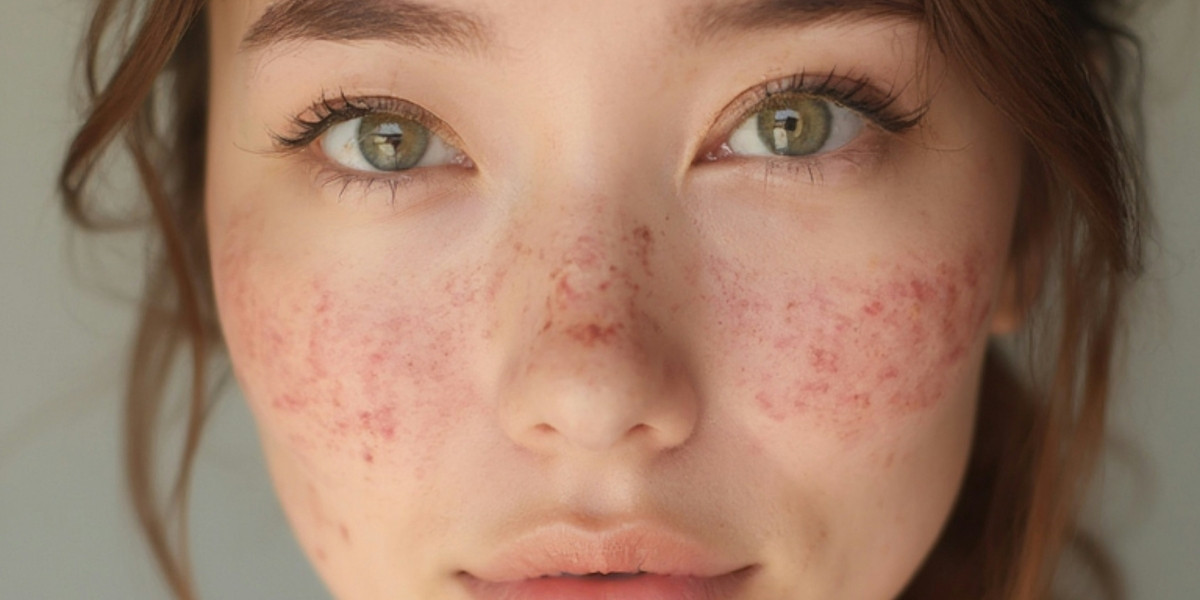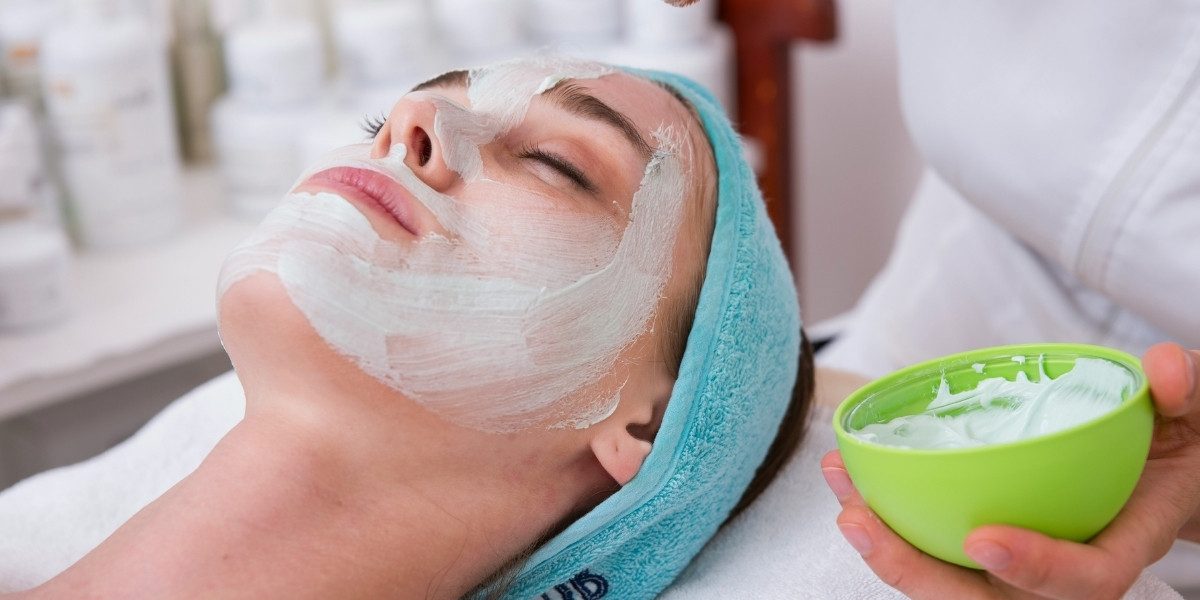Rosacea is a chronic skin condition that affects millions of people worldwide, often causing redness, visible blood vessels, and sometimes pimples. It typically affects the face, particularly the cheeks, nose, chin, and forehead, leading to discomfort and frustration for many who experience it. Though it’s most commonly seen in individuals with fair skin, rosacea can affect anyone, regardless of age, gender, or background.
We’ll dive deep into rosacea, its symptoms, possible triggers, and effective treatments, so you can better understand how to manage the condition for clearer, healthier skin.
What Is Rosacea?
Rosacea is a condition that causes the skin to appear red or flushed, often mistaken for acne, eczema, or an allergic reaction. The exact cause of rosacea remains unknown, but it is believed to be linked to an overactive immune system, genetic factors, or environmental triggers. Most people who develop rosacea are between the ages of 30 and 60, and the condition is more common in women, though it tends to be more severe in men.
Common Symptoms of Rosacea
While rosacea presents differently in each person, there are several key symptoms to look out for:
-
Facial Redness – The most common symptom is persistent redness in the central part of the face. This can look like a blush or sunburn that doesn’t go away.
-
Visible Blood Vessels – Broken blood vessels, or telangiectasia, are often visible under the skin, creating a spiderweb-like pattern on the face.
-
Bumps and Pimples – Many individuals with rosacea develop acne-like pimples, which can be filled with pus. These are not the same as traditional acne and often lack blackheads.
-
Eye Irritation – Rosacea can also affect the eyes, leading to a condition known as ocular rosacea, which causes dryness, irritation, and redness in the eyes.
-
Thickened Skin – In rare cases, the skin can become thickened, particularly on the nose (a condition known as rhinophyma), leading to a bulbous appearance.
Triggers That Can Worsen Rosacea

While the exact cause of rosacea is still not fully understood, various environmental and lifestyle factors can trigger flare-ups. These triggers can vary from person to person, but some of the most common include:
-
Spicy Foods – Many people with rosacea report that consuming spicy foods can lead to flare-ups. Capsaicin, the compound that makes peppers spicy, can cause blood vessels to expand.
-
Hot Weather – Heat, particularly in the summer months, can cause blood vessels to dilate, exacerbating rosacea symptoms.
-
Alcohol – Alcohol, especially red wine, is a well-known trigger. It can cause the blood vessels to expand, leading to more noticeable redness.
-
Stress – Emotional stress is another common trigger. Stress can increase inflammation in the body, leading to rosacea flare-ups.
-
Sun Exposure – Ultraviolet (UV) rays from the sun can irritate the skin and lead to flare-ups, making sunscreen a must for those with rosacea.
Effective Treatments for Rosacea
Though rosacea is a chronic condition, it can be effectively managed with the right approach. There is no cure, but various treatments can help minimize symptoms and prevent flare-ups. Here are some common treatment options:
-
Topical Medications – Doctors often prescribe topical medications like metronidazole, azelaic acid, or ivermectin to reduce inflammation and redness. These medications can be applied directly to the affected areas and are often effective in controlling mild to moderate rosacea.
-
Oral Medications – For more severe cases, oral antibiotics such as doxycycline or tetracycline may be prescribed. These medications help reduce inflammation and bacteria in the skin.
-
Laser Treatments – In cases where rosacea causes visible blood vessels or persistent redness, laser therapy may be recommended. Laser treatments can help reduce the appearance of blood vessels and even out skin tone.
-
Skincare Products – A gentle skincare routine is essential for managing rosacea. Opt for products that are fragrance-free and designed for sensitive skin. Avoid harsh scrubs and astringents, as these can worsen irritation.
-
Sunscreen – Daily sun protection is crucial for those with rosacea. Look for sunscreens that contain zinc oxide or titanium dioxide, which provide broad-spectrum protection and are less likely to irritate the skin.
Lifestyle Tips for Managing Rosacea
In addition to medical treatments, there are several lifestyle changes you can make to help keep your rosacea under control:
-
Identify and Avoid Triggers – Keeping track of what triggers your rosacea flare-ups is key. Whether it’s spicy food, alcohol, or hot weather, learning to avoid these triggers can help minimize symptoms.
-
Stay Cool – If heat is a trigger, try to stay in cool, air-conditioned environments. Carrying a portable fan or using a cooling facial mist can help when you’re out in the heat.
-
Practice Stress Management – Since stress is a common trigger for rosacea, incorporating relaxation techniques such as yoga, meditation, or deep breathing can help reduce flare-ups.
-
Wear Protective Clothing – If sun exposure triggers your rosacea, wear a wide-brimmed hat and protective clothing to shield your face from the sun’s harmful rays.
When to See a Dermatologist
If you suspect you have rosacea, it’s important to consult a dermatologist. They can diagnose the condition and help you develop a treatment plan tailored to your needs. Early intervention can prevent the condition from worsening and help you manage symptoms more effectively.
Rosacea Myths Debunked
There are several misconceptions about rosacea that can lead to confusion and poor management of the condition. Let’s clear up some of the most common myths:
-
Myth 1: Rosacea is just acne – While rosacea can resemble acne, it’s a separate condition. Unlike acne, rosacea doesn’t typically involve blackheads or cysts.
-
Myth 2: You can “cure” rosacea – While there’s no cure for rosacea, it can be effectively managed with treatment.
-
Myth 3: Rosacea is only caused by poor hygiene – Rosacea is not caused by poor hygiene. It’s a medical condition that is largely influenced by genetic and environmental factors.
By understanding the true nature of rosacea and learning how to manage its symptoms, you can improve your skin’s appearance and quality of life.








